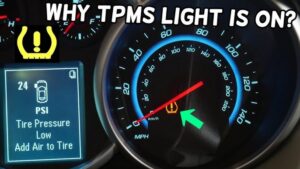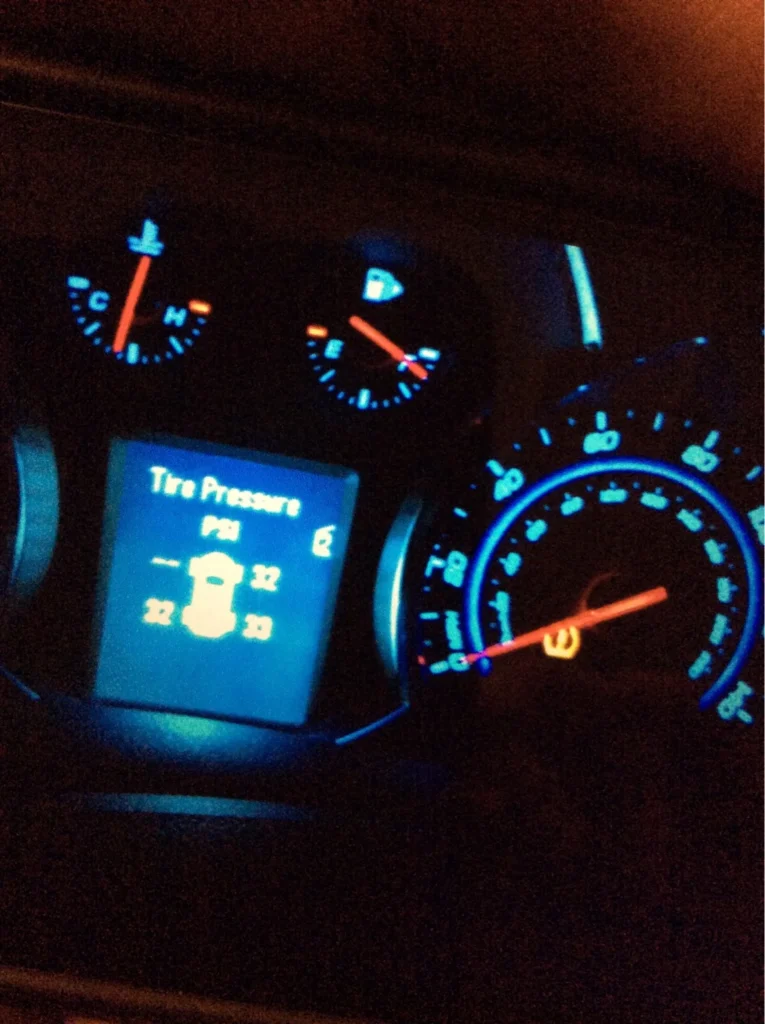Blog
Why You Shouldn’t Ignore TPMS Warning Alerts
Why You Shouldn’t Ignore TPMS Warning Alerts
The Tire Pressure Monitoring System (TPMS) is a critical safety feature in modern vehicles, designed to keep you informed about the condition of your tires. When the system alerts you to an issue, such as low tire pressure, it’s easy to dismiss it, especially if you’re in a rush or don’t notice any immediate driving issues. However, ignoring TPMS warning alerts can lead to significant risks, both for your safety and your vehicle’s longevity. In this article, we’ll explore why you shouldn’t ignore TPMS warning alerts and the potential consequences of doing so.
What is TPMS?
A Tire Pressure Monitoring System (TPMS) is a technology in vehicles that monitors the air pressure inside tires. It alerts the driver if the pressure in one or more tires is either too low or too high, which can affect vehicle performance and safety. TPMS systems are usually equipped with either direct or indirect sensors:
- Direct TPMS uses sensors mounted inside the tires to measure air pressure and send data to the car’s onboard computer.
- Indirect TPMS uses the vehicle’s ABS (Anti-lock Braking System) sensors to estimate tire pressure based on the rotational speed of the tires.
Regardless of the type of TPMS, the goal is the same: to prevent tire-related issues that could compromise safety and vehicle performance.
1. Increased Risk of Tire Blowouts
One of the most dangerous consequences of ignoring a TPMS warning alert is the increased risk of a tire blowout. When a tire’s pressure is too low, it generates excessive heat and can cause the tire to weaken, ultimately leading to a blowout. A sudden tire blowout, especially at high speeds, can result in loss of vehicle control and a potentially devastating accident.
Low tire pressure is the leading cause of blowouts. Even a small decrease in air pressure can significantly reduce the tire’s ability to handle the road and increase the risk of failure. By responding to TPMS alerts and addressing low tire pressure, you can prevent these types of dangerous incidents.
2. Decreased Vehicle Performance and Handling
Tires are the only point of contact between your vehicle and the road. If tire pressure is too low or too high, it can affect the vehicle’s handling, steering, and braking. Ignoring a TPMS alert could result in tires that are not providing adequate grip or stability, especially during turns, acceleration, or emergency maneuvers.
Underinflated tires are particularly prone to skidding or sliding, while overinflated tires can lead to a harsh, uncomfortable ride and increased wear. In either case, your ability to control the vehicle is compromised, making it more difficult to respond to road conditions and obstacles.
3. Poor Fuel Efficiency
Tire pressure directly affects your vehicle’s fuel efficiency. Underinflated tires create more rolling resistance, which means your vehicle has to work harder to maintain speed. This leads to increased fuel consumption and higher operating costs. On the other hand, overinflated tires can cause uneven tire wear, which could also negatively impact fuel efficiency in the long run.
A TPMS alert about low tire pressure should be taken seriously, especially if you want to avoid unnecessary fuel costs. Proper tire pressure helps ensure your vehicle is running efficiently and saving you money at the pump.
4. Accelerated Tire Wear and Uneven Tread
Ignoring TPMS warnings can lead to uneven tire wear, which shortens the lifespan of your tires and forces you to replace them more frequently. Low tire pressure causes the outer edges of the tire to wear faster than the center, while overinflation can lead to wear in the center of the tire. This uneven wear can not only lead to poor handling but also cause the tire to become more vulnerable to damage or blowouts.
By taking immediate action when a TPMS alert sounds, you can help ensure even tire wear, extending the life of your tires and saving you money on replacements.
5. Impact on Your Vehicle’s Safety Features
Many modern vehicles have safety features that rely on properly inflated tires, such as ABS, traction control, and stability control. Low or irregular tire pressure can interfere with these systems, making them less effective in critical situations. For example, your vehicle may struggle to maintain traction on wet or icy roads, and braking distances could increase.
By ignoring TPMS alerts and allowing tire pressure issues to persist, you could inadvertently disable or reduce the effectiveness of key safety features in your vehicle.
6. Increased Risk of Hydroplaning
Hydroplaning occurs when a layer of water builds up between the tires and the road, causing the vehicle to lose traction and slide uncontrollably. Proper tire pressure helps maintain the tires’ contact with the road, which is essential for preventing hydroplaning. When tires are underinflated, their tread cannot channel water away effectively, increasing the likelihood of hydroplaning, especially in rainy or wet conditions.
Ignoring TPMS warnings and continuing to drive with improperly inflated tires puts you at a greater risk of losing control in adverse weather conditions.

7. Voiding Your Warranty
Many vehicle manufacturers include tire maintenance and the functioning of TPMS as part of the warranty coverage. Ignoring TPMS alerts could lead to increased wear and tear on your tires and other vehicle systems, which may void your warranty or insurance coverage. Additionally, in some cases, failure to maintain proper tire pressure could be viewed as neglect, leading to potential financial consequences.
It’s always best to address a TPMS warning immediately to avoid issues with warranty claims or insurance coverage.
8. Legal and Safety Compliance
In some regions, vehicle owners are legally required to maintain a functioning TPMS system. Failure to address a malfunctioning TPMS or ignore warnings about tire pressure could result in legal consequences or fines. Additionally, some jurisdictions may require that vehicles undergo regular safety inspections, including checks on the functionality of safety features like TPMS.
Ignoring TPMS alerts could lead to non-compliance with local regulations, which could result in fines or penalties.

What Should You Do When You Get a TPMS Alert?
If your TPMS light comes on, it’s important to act promptly:
- Check Tire Pressure: Use a tire pressure gauge to check the pressure of all four tires. If any are low, inflate them to the recommended level (usually found on the sticker inside the driver’s door).
- Look for Leaks or Damage: Inspect your tires for visible damage, such as punctures or cuts. If you find any, take your vehicle to a mechanic or tire shop for repairs.
- Get Professional Help: If the TPMS light stays on after you’ve checked and adjusted the tire pressure, there may be an issue with the TPMS sensor. In this case, it’s best to have a professional inspect your vehicle to ensure everything is working properly.
Conclusion
TPMS warning alerts are there for a reason—to help keep you safe and ensure that your vehicle operates efficiently. Ignoring these warnings can lead to serious consequences, including tire blowouts, decreased vehicle performance, increased fuel consumption, and costly repairs. By taking immediate action when a TPMS alert sounds, you protect your vehicle, your passengers, and your wallet. Make sure to never ignore these warnings and always address tire pressure issues promptly to maintain the safety and reliability of your vehicle.


